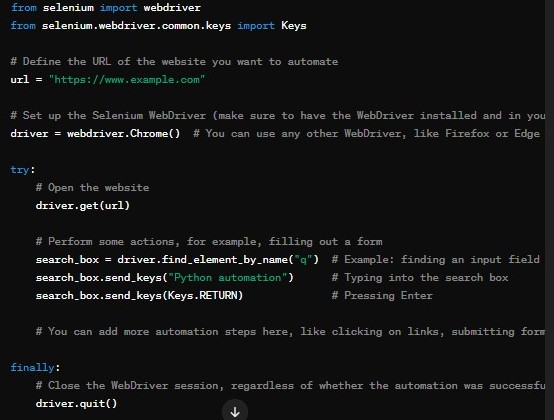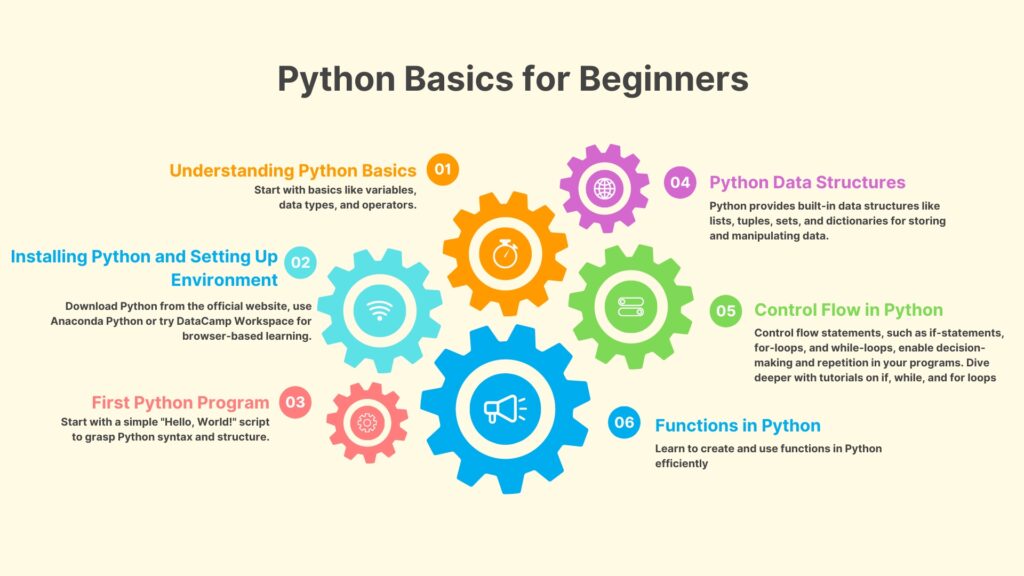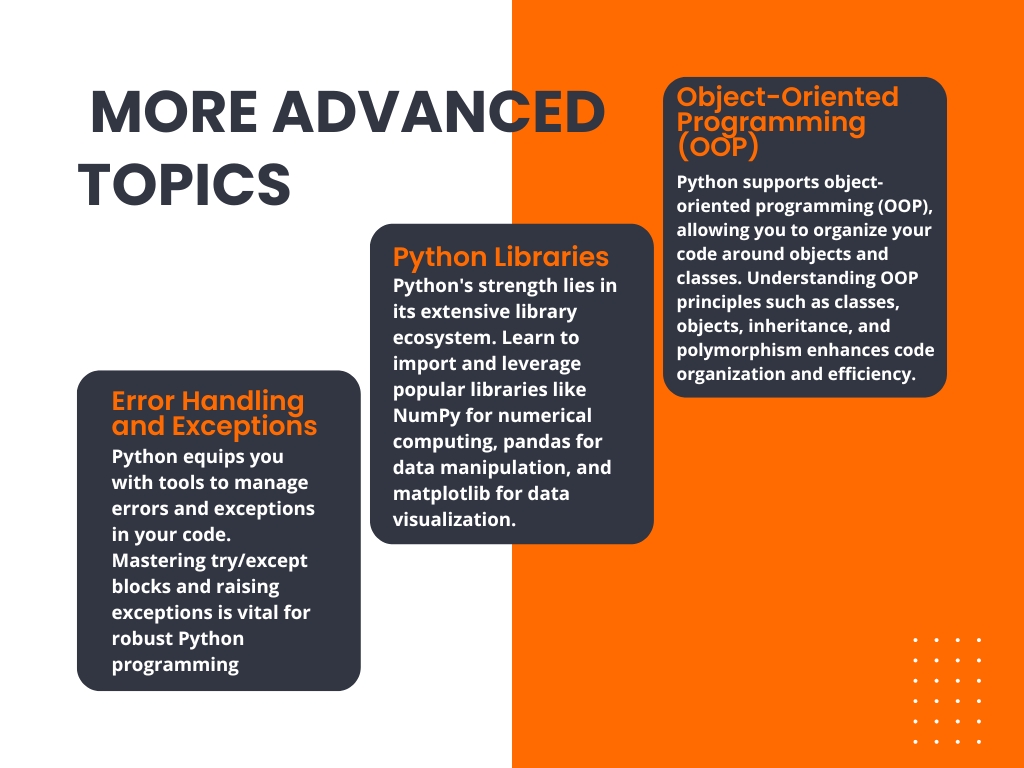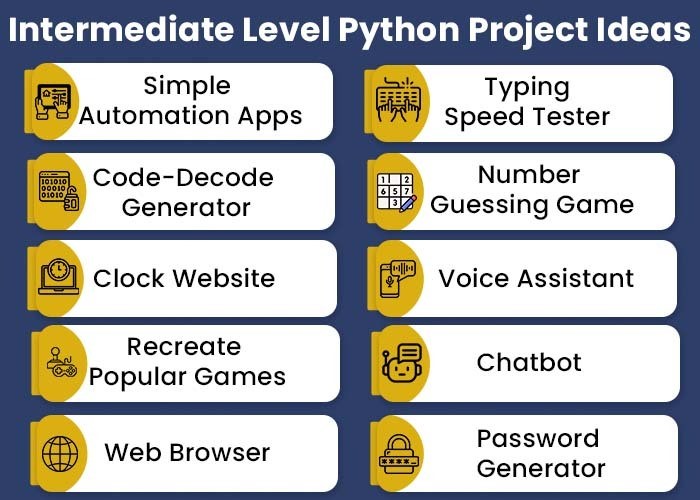Table of Contents
ToggleThis blog is ideal if you’re new to the coding world or your boss wants you to learn programming. Python is one of the most popular programming languages that most organizations use globally. It is a high-level, general-purpose programming language that is quite easy to learn and you may need 10 weeks approximately to get a good hold of it.

Python is Good for Beginners: Why?
Python is a type of computer language that’s easy to understand. It’s great for people who are new to programming. Python can do a bunch of stuff! You can use it to make websites, games, or even control robots. It’s also handy for grabbing lots of data from websites, picking out what you need, and showing it nicely. And if you’re into fancy stuff, Python can handle AI and Machine Learning, which powers smart systems today. What’s cool is that Python’s way of writing looks a lot like regular English. So, if you know how things work, it’s like having a chat with the computer.

Image Source: Google
1. Task Automation Becomes Easy
Think about being a big football fan. As a football fan, staying updated on your favorite teams and players can be time-consuming. But with a scraper tool, you can gather all the info you want from the web and see it in one place, saving you time and hassle!
You can make your life easier by automating tasks with Python! Just install Python on your computer and pick the right libraries for what you want to do. Many libraries are out there, so choosing the best one might take a little time. But don’t worry, there’s a library for almost everything you can think of!

Whether it’s sending emails or searching the web, Python can handle lots of boring tasks for you. And you don’t need to be a coding expert to do it! Once you get the hang of APIs (that’s short for Application Programming Interfaces), you’ll unlock a whole bunch of new possibilities.
2. Data Science Seems Smooth
Ever felt like your phone knows what you’re thinking? Like when you’re eyeing new sneakers and suddenly see shoe ads on Instagram? Or when you’re daydreaming about a holiday and get an email with tempting travel deals? It’s not magic—it’s data science at work.

Data science goes beyond ads; it’s everywhere! It helps leaders make better decisions, marketers target the right customers, and even improves how machines talk to us. Understanding data can empower you to make the most of these technologies and protect your privacy better. Learning Python is a smart move in today’s data-driven world!
3. Better for Career Shift
If you’re considering a switch to a tech career but aren’t entirely sure, trying out an introductory Python course could be just the thing for you. It offers the opportunity to grasp programming fundamentals, connect with fellow developers and tech fans, and enhance your skill set.
Moreover, you’ll become part of a dynamic community where many have also chosen to upskill and transform their lives. With the changing job landscape, it’s important to recognize that careers aren’t static anymore. Embracing career shifts as part of the new norm allows you to make changes on your terms rather than waiting for circumstances to dictate them.
4. Learn AI/ML Quickly
Machine Learning is essentially teaching computers to do tasks by using big sets of data. It’s everywhere—from chatbots assisting customers to detecting dementia through brain scans. Whether you’re in marketing or medicine, understanding its basics is key.

Image source: devblogs.microsoft.com
But Machine Learning is just a fraction of what AI involves, and Python plays a big role in other AI applications too. Learning Python basics can help you delve into neural networks and natural language processing, opening up more possibilities to explore.
5. Hassle-free Communication with Developers
Even if you’re not planning to code a lot yourself, learning Python basics can give you insights into app development. Understanding coding concepts and logic makes conversations with programmers more productive. Nowadays, developers aren’t just the techy folks in the office—they’re professional teams shaping core products and processes for most companies.
If you’re in a managerial role or closely involved with technology, you’ll probably interact with developers daily. And even if not, knowing some code can make a big difference in your communication with peers or clients down the line.
6. Popularity of Python
As of January 2024, Python remains the most popular programming language according to the TIOBE index. Python has gained immense popularity over time because of its simplicity, versatility, and extensive range of uses.

Image source: www.datacamp.com
Let’s explore some key features of Python:
- Readability: Python’s syntax is clear and easy to read, resembling English to some extent.
- Ease of learning: Its readability makes it beginner-friendly, allowing newcomers to understand code more easily.
- Versatility: Python can be used across various fields like web development, automation, and data science.
- Rich library support: It offers a vast standard library and thousands of third-party packages, saving time and effort.
- Platform independence: Code can be written once and run on any operating system, making it ideal for diverse teams.
- Interpreted language: Python executes code line by line, simplifying debugging.
- Open source and free: Python’s source code is freely available, fostering a large community and extensive library ecosystem.
- Dynamically typed: Variables don’t require explicit data type declaration, enhancing flexibility and ease of use.
Steps to Learn Python as a Beginner
Let’s break down why learning Python is important and how to get started easily.
1. Understand Your Reasons
Before diving in, think about why you want to learn Python. Maybe you want to automate tasks, analyze data, or create software. Knowing your goals will help you plan your learning journey.
2. Start with the Basics
Python is great because it’s easy to learn. Begin with simple concepts like variables and data types. You can set up Python on your computer or use online tools like DataCamp Workspace to practice coding.

3. Learn More Advanced Topics
Once you’re comfortable with the basics, you can explore more complex topics like error handling, working with libraries, and object-oriented programming. These skills will help you write better code.

4. Practice, Practice, Practice
The best way to learn Python is by doing. Work on projects that interest you, attend coding events, and try to apply what you’ve learned to real-life situations.

Image source: collegevidya.com
5. Build a Portfolio
As you finish projects, gather them into a portfolio that mirrors your skills and passions, tailored to your desired career path or industry. Strive to create original projects that highlight your problem-solving abilities. Here are some suggestions:
- For beginners: Consider simple projects such as a number guessing game, a to-do list application, or basic data analysis with a dataset of interest.
- For intermediate learners: Explore more complex projects like a web scraper, a blog website developed using Django, or a machine learning model implemented with Scikit-learn.
- For advanced learners: Undertake large-scale projects like a full-stack web application, a sophisticated data analysis project, or a deep learning model built using TensorFlow or PyTorch.
6. Keep Pushing Yourself
Learning Python is an ongoing process. Don’t be afraid to tackle challenging tasks and continue to explore new areas of the language. Stay curious and keep practicing!
Conclusion
If you’re yet not convinced that Python is the best-suited programming language for you as a beginner but you direly need it, talk to us. Spoclearn’s Introduction to Python Training will help you ace your career in the IT domain.
